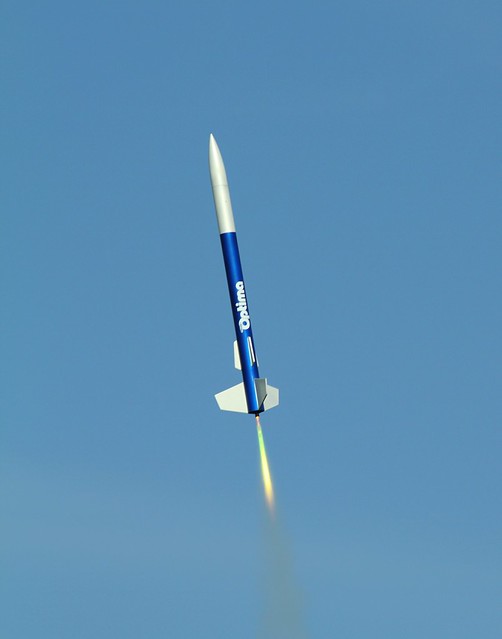Not to gainsay or dispute anything posted so far, but:
I understand that there are no hard and fast rules for this, but I'm curious if there is a generally accepted path to high power rocketry. What are the skills and fields of knowledge that you would want someone to attain before they consider going for L1 certification?
Those are two distinct questions (the first doesn't have a lot to do with the second).
First question (overlong almost-an-answer):
L1 certification doesn't have to be too different from flying a big rocket on a mid power motor. Build and fly some mid power rockets before attempting L1.
I honestly have not seen a lot of fliers do it that way. Most of the L1 cert attempts I have seen seem to have been folks going straight from LPR to HPR, or folks who just
started at HPR (who tried to cert at the first high power launch to which they brought a rocket).
If you want to scratch-build your L1 rocket, get
Mike Westerfield's Make: High Power Rockets. (on Amazon
here) for an expanded and illustrated version of the advice you got upthread -- all compiled into one place by one author who knows (pretty much) the subject about which he is writing. The L1 rocket presented in the book is a conventional design, does not require special tools or building techniques, and is made of easily sourced components (he includes a bill of materials for each of the rockets in the book).
If you want to build a kit, I'll echo
@boatgeek:
My advice would be to get something made from easily worked materials (paper and plywood) which will fly well on mid-power motors as and is capable of flying on an H. So a 29mm motor mount, or something that can easily be adapted down to 29mm.
My reasoning on this is that F and G motors are less expensive than H and I motors, and you can (probably) fly mid power in more places and under a greater range of conditions than you can fly high power -- so the rocket won't ONLY be your L1 rocket.
Really, for me, the trickiest parts turned out to be lining up the certifiers and arranging to have a another HP motor put aside for me in case I'd failed to certify on the first attempt (I brought two L1-capable rockets on the day I'd planned to fly for cert, in case the first attempt ended catastrophically. Since you are only permitted to buy one L1 motor prior to being certified I made arrangements with another flier to bring another copy of my cert motor to the field).
Flying a Jolly Logic chute release is not a terrible idea for a cert flight. It adds another potential point of failure, and puts one more thing to your checklist, but you will not certify if your rocket drifts away over the horizon.
Last thing I'd suggest: in addition to the certifiers try to line up a photographer/videographer to record the launch. It will be more fun for you to watch it happening if you don't have a camera in front of your face.
-------
As for what
I would want to see someone do before getting certified... I'd include a written exam with some math problems. I'd ask questions like:
1)
Why is it necessary for the CP to be aft of CG, and why is it desirable for it to be a at least one body diameter aft of CG.?
2)
Why is the rule-of-thumb that it is better to launch on a motor with a thrust at least 5 times the pad-weight of the rocket, and what things might affect that determination (what circumstances could change that might incline you go with a lower thrust motor, or make it safer to go with a higher thrust motor)?
3) Why does the shock cord have to be as long as it is (and what can you do to get away with a shorter shock cord)?
4) When designing a rocket with a cluster of motors, why might it be safer to cant the engine mounts so that the nozzles are directed outwards from the central axis of the rocket?
... 5)... 6)... and a bunch more questions like this -- but these are only my opinions on the matter. You can certify (and fly happily for a long time) without knowing
all of this stuff.
edit: Badly screwed up the bb code...









